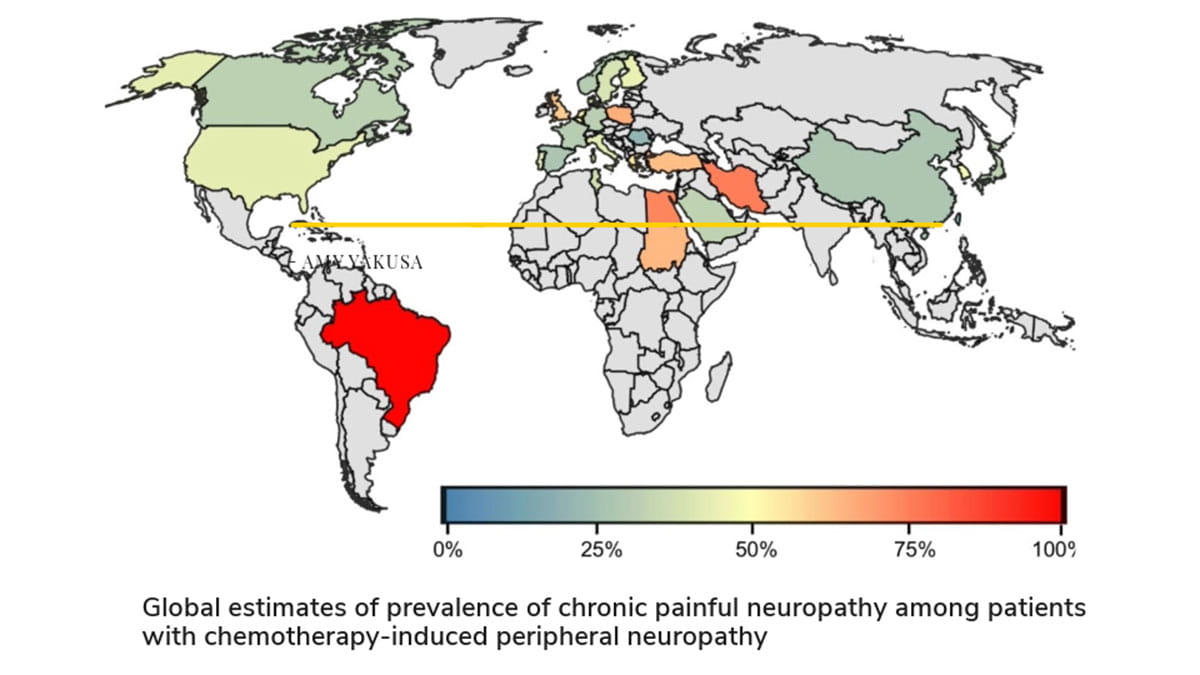Chemo-related neuropathy research suggests tailored approaches to pain relief for patients
 Four of every 10 patients worldwide undergoing chemotherapy experience persistent and severe peripheral nerve pain, or neuropathy. It is believed the condition is caused by direct peripheral nerve cell damage that disrupts or rewires normal nerve signaling pathways. As more people survive cancer due to the continual development of innovative treatments, a group of researchers completed a systematic review and meta-analysis of data from 28 countries between the years of 2000–2024, in order to determine better planning and treatment to address this debilitating condition. The findings were just published in the journal Regional Anesthesia & Pain Medicine.
Four of every 10 patients worldwide undergoing chemotherapy experience persistent and severe peripheral nerve pain, or neuropathy. It is believed the condition is caused by direct peripheral nerve cell damage that disrupts or rewires normal nerve signaling pathways. As more people survive cancer due to the continual development of innovative treatments, a group of researchers completed a systematic review and meta-analysis of data from 28 countries between the years of 2000–2024, in order to determine better planning and treatment to address this debilitating condition. The findings were just published in the journal Regional Anesthesia & Pain Medicine.
Nasir Hussain MD, a physician in the Department of Anesthesiology at The Ohio State University College of Medicine, helped lead author Ryan D'Souza, MD, from the Mayo Clinic, and other experts from around the country compile and release the findings. He says the proportion of patients experiencing chemotherapy-induced peripheral neuropathy (CIPN) remains poorly understood and poorly addressed. To examine this substantial global health challenge taking place across continents and cancer types, the research included 77 studies from 28 countries, encompassing 10,962 patients with CIPN.
“This study is the first comprehensive global estimate of the prevalence of CIPN, which highlights its significant burden on patients worldwide,” Dr. Hussain says. “Sixty percent of those studied who had lung cancer reported the highest prevalence of chronic painful CIPN.”
Due to variations across geographical regions, cancer types and chemotherapy regimens, the researchers assert the need for tailored pain management strategies and further research to address potential disparities.
“Our aim is to be able to develop interventions that can reduce the burden of CIPN,” Dr. D’Souza says. “Interventions that promote early diagnosis are needed to enable the development of personalized treatment strategies.”
Clinicians, researchers and staff at The Ohio State University Comprehensive Cancer Center Arthur G. James Cancer Hospital and Richard J. Solove Research Institute (OSUCCC – James) have developed extensive occupational and physical therapy rehabilitation programs for cancer patients. Karen Hock, MS, PT, who is the associate director of oncology rehabilitation at the OSUCCC – James, is part of a team that delivers the latest methods of oncology rehabilitation. They’ve worked to establish and implement a comprehensive rehabilitation model that optimizes patients’ joint movement and function as early as possible, which impacts the ability to maintain function and quality of life.
Hock says that interventions that include a range of motion, proprioception, balance in lower extremities, fine motor exercises for hand intrinsic muscles, and exercises for the intrinsic muscles of the feet help patients make important progress.
“Another important component of addressing CIPN is treating the pain associated with this condition that impacts function,” she says. “This can be done through desensitization exercises that can include tissue manipulation performed by the patient themselves.”
Continued research that further impacts the development of interventions and treatments will enhance and improve the quality of care delivered to patients.
